Hello, steemies and garden lovers!
In a previous post, I talked about the tomatoes in my garden, and about picking them. In this post, I'll talk about how I preserve them so that I can eat them in the winter. I mostly use the tomatoes to cook with, so I preserve them in pint jars. The process of preserving food in glass jars is called canning.
When canning high acid foods such as tomatoes, a water bath canning process is normally used. This is a fairly simple process that doesn't take a lot of equipment. The simple description of the process is, filling the jars with the tomatoes, putting the canning lids on the jars, and then boiling the jars in a deep pot full of water for a certain amount of time, depending on the size of the jars. There's more details to the process, which I will describe in this post.
For canning tomatoes, the first thing you need to do is to wash them. I also peel them because I don't care for the skins in my cooking. The easy way to peel a tomato is to put it into almost boiling water just long enough for the skin to split. Then take the tomato out of the hot water and put it into cool water to stop it from cooking any further.
It only takes a minute or 2 in the cool water to cool them down enough, and them I put them in another bowl to make room for the next tomatoes in the cool water. You can see how the skins split and loosen up on the tomatoes. That makes them much easier to peel.
From this point, the process gets a bit messy. I peel each tomato, cut out the stem and the bottom, sometimes multiple bottoms, and then cut the tomato into pieces into a big pot.
At this point, the tomatoes are ready to be put into the jars. I use the standard mouth pint jars for canning tomatoes. I use a canning funnel to fill the jars, it's less messy. I'm putting the jar into the bowl when I fill it to hopefully catch any spillage while filling the jar. I do what's known as the cold pack method. I don't heat up the tomatoes before I put them in the jars. I use the blue "stick" to get the trapped air bubbles out of the jar as I'm filling it.
I just fill the jar with my hand.
After I fill each jar, I put it in my big heating pot that has hot water in it. After I get all the jars filled up, I let the contents heat up for a bit before preparing them for the canner. Heating the jars full of tomatoes is necessary because once you put the lids on, the jars are put into a pot of boiling water. If the jars are cold when put into the boiling water, the temperature difference can cause the jars to break.
I add 1/4 teaspoon of canning quality citric acid powder and 1/2 teaspoon of canning salt to each pint jar. The citric acid raises the acidity to make it safer for water bath canning. It takes the place of the lemon juice concentrate that used to be recommended for that purpose. While the filled jars are heating up, I'm also heating the lids in almost boiling water to soften up the sealing compound around the rim of the lid. This helps to get a good seal on the rim of the jar.
Once the full jars are hot, I wipe the rim of each jar before I put the lid and band on the jar. Any food on the rim can interfere with the jar lid sealing properly. Once the jars have the lids on them, I put them into the boiling water in the water bath pot. I handle the jars with a set of jar tongs made for the purpose. The water will stop boiling as you add the jars, this is normal.
I do all my canning in my greenhouse on a propane burner so that I don't steam up the kitchen.
Once I have all the jars in the water bath pot, I put the lid on the pot and bring the water back to a boil. For pint jars of tomatoes, the proper amount of time to boil them is 50 minutes of continuous boiling.
After the time is up, just shut off the burner, take the lid off the pot, and wait at least 5 minutes for the pot to cool off a bit. After at least 5 minutes, you can start taking the jars out of the pot. Place the jars on a towel with a bit of space between them to let them cool off. The jars will be very hot, so use the jar tongs to handle them. Don't try to check the lids until the jars have cooled off. Disturbing the lids before that could cause the jar to not seal properly. With regular canning lids, you can see if the jar has sealed, the little bump in the middle of the lid will be pulled down if the jar has sealed.
Here's the 8 pints of tomatoes after they've been pulled out of the water bath pot.
For more information on canning tomatoes and other foods, there are several different books you can buy about canning. You can also find more information on the internet, more than I can cover in this post.
That's all I have for this post, I hope you found it interesting!

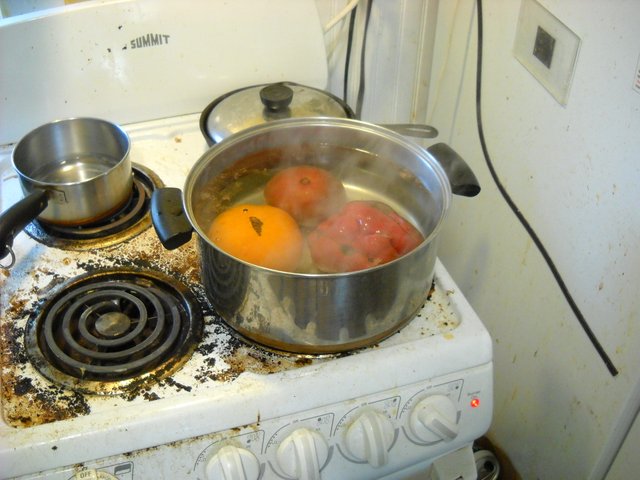
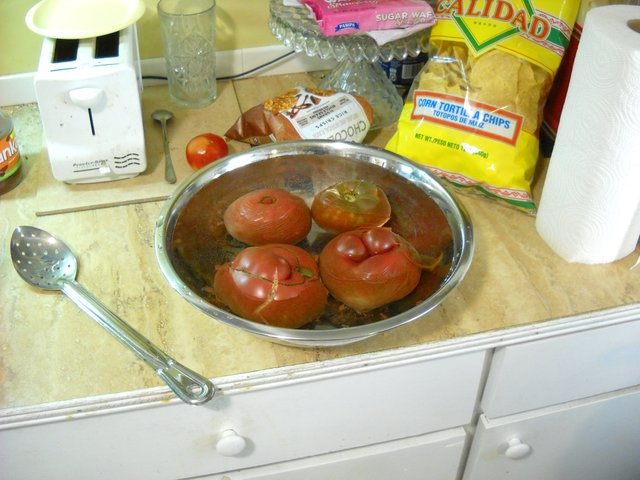
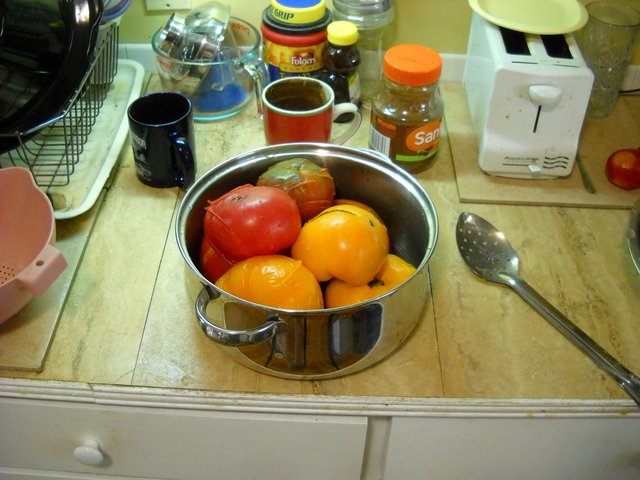
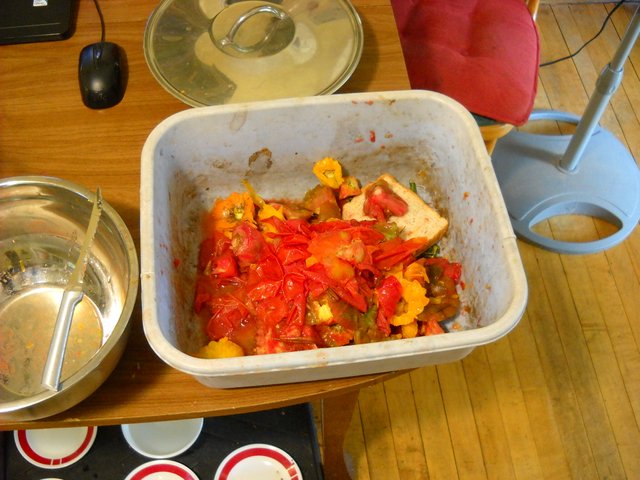
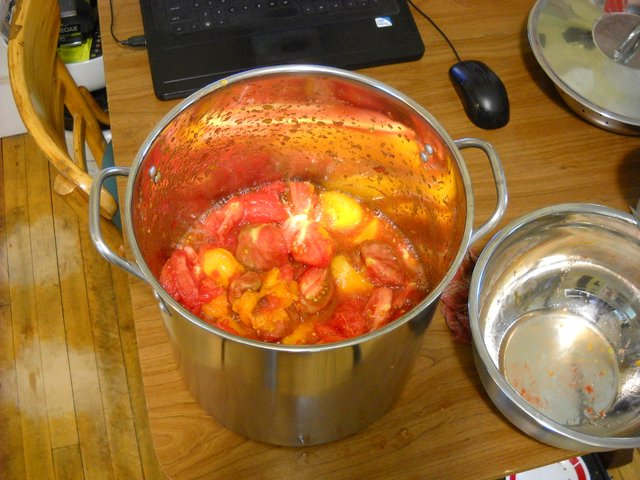
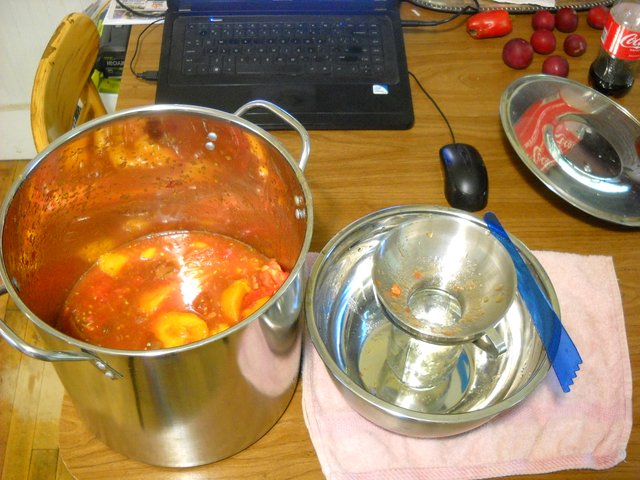
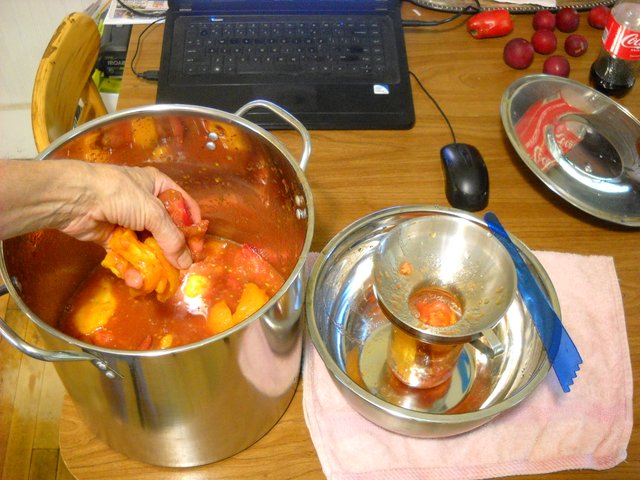
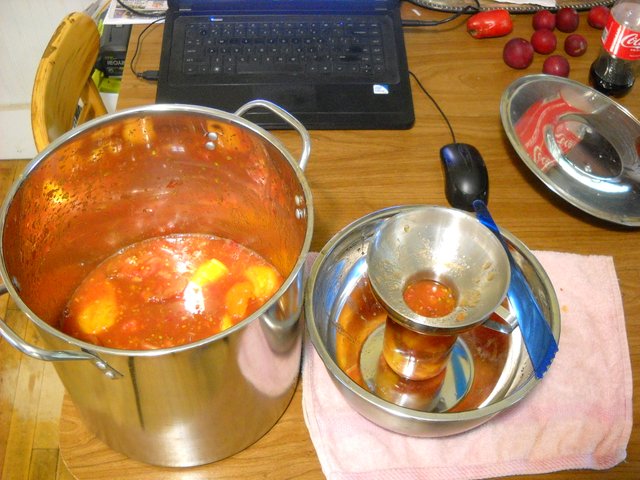
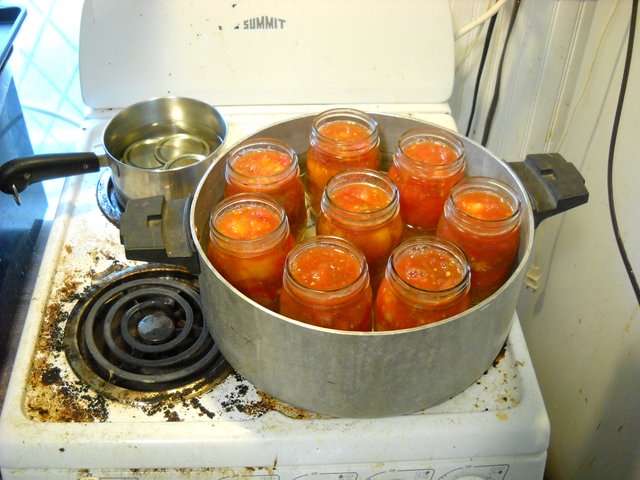
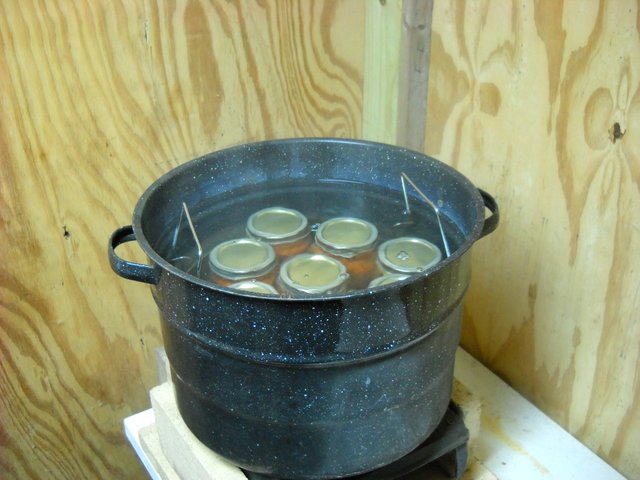
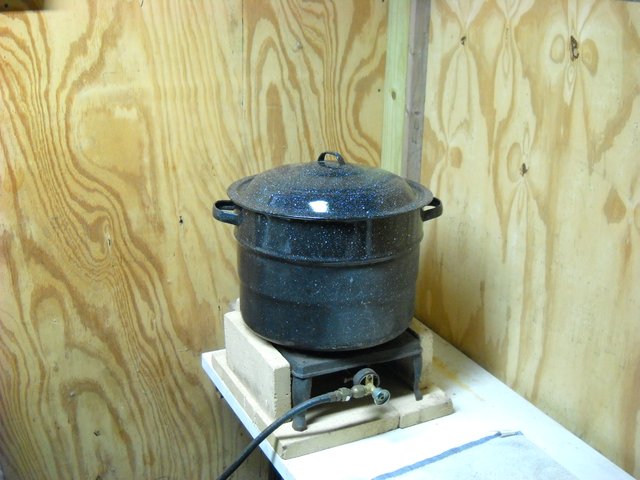
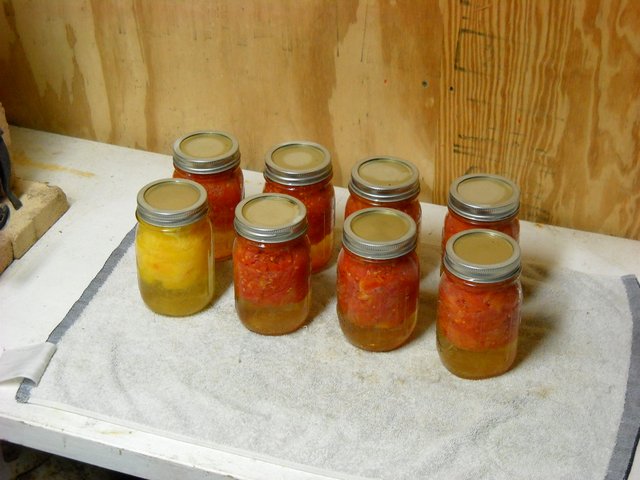
Hi @amberyooper,
I prefer to upvote users who continually powerup their earnings and continually upvote others (preferably like-minded users) with their increasing Steem Power. I am glad to note that you are in that category. You will receive my upvotes regularly as long as you maintain this status.
Downvoting a post can decrease pending rewards and make it less visible. Common reasons:
Submit
Thank you very much for your detailed story about canning tomatoes. Once upon a time, I also did as you wrote. I also pickled tomatoes with vinegar. I like pickled tomatoes.
You can join #club5050. You can use the tag #club5050
Downvoting a post can decrease pending rewards and make it less visible. Common reasons:
Submit
Wow, your post very interesting friend!
👍👍👍
#club5050
Downvoting a post can decrease pending rewards and make it less visible. Common reasons:
Submit